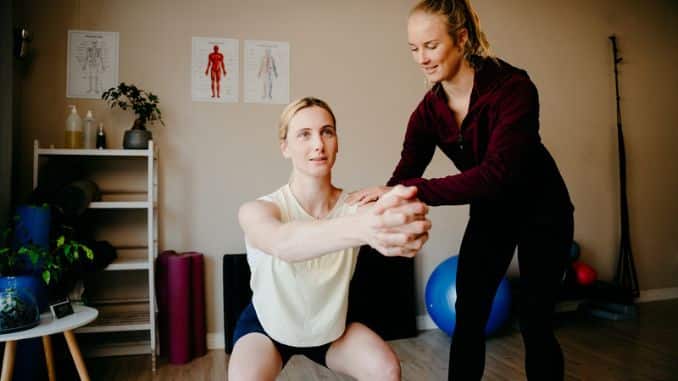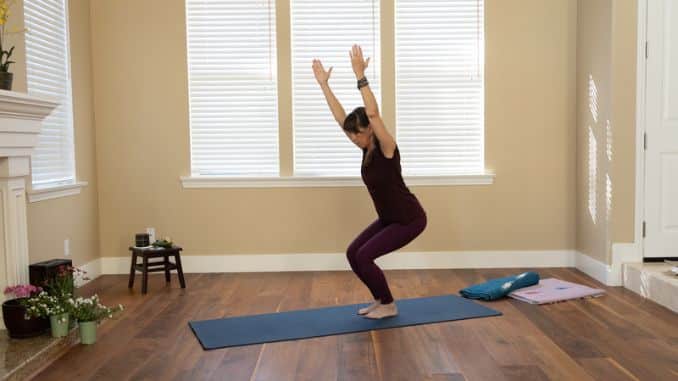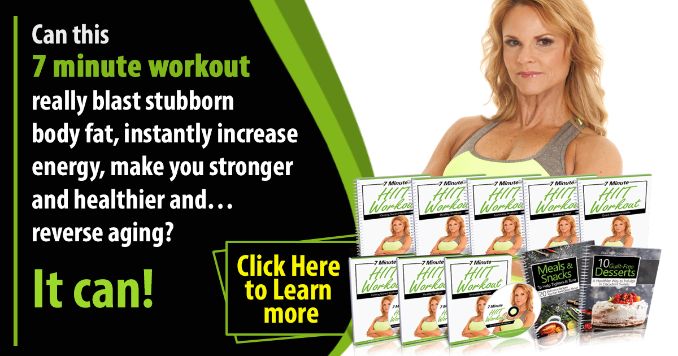
I am back from San Diego. On my way back, I stopped at the BCFit’13 conference and did a presentation in North Vancouver on Sunday. I did a presentation on hands-free self-massage. The session went great. Okay, for today, I have an interview for you. It is with good old Tyler Bramlett. And we talk about the importance of the progressive movement for Maximal Results and Injury Avoidance.
Enjoy the interview.
~ Rick Kaselj, MS
Today, I have another interview for you, and it’s with Tyler Bramlett. He has been on EFI many times before. But I have him on again, and we will talk about the importance of the progressive movement.
A lot of people are avoiding or not following progressive movements. And that leads to injury and pain and slows down one’s results. So Tyler, for those people that don’t know you. I need you to do a brief introduction of who you are.
Who is Tyler Bramlett?
Tyler Bramlett: To give you a back story on the call. Rick and I we are on the call about 45 minutes ago, and we are just starting now. He can see that I can talk. So how did I get into the dungeon? Some of you guys may have known me from past interviews. I am Tyler Bramlett from CT-50.com.
I am just a guy who was out of shape, sick, fat, tired, and overweight as a youngster. As I got older, I wanted to change everything; I wanted to change it a lot. I went through a process of many mistakes over a decade and a half. It took so long to learn how to do the stuff, right? I’ve learned what I feel is the correct way to approach your training. Not only for performance but body transformation as well. I am just passionate about sharing that with all.
Rick Kaselj: Oh, yeah.
Tyler Bramlett: I don’t want people to go through my loops. You are ‘exercises for injuries, and we have a lot of conversations about this because I had a lot of injuries in my days and am making mistakes.
The biggest thing was teaching people how to go about this safely. So that they can be fit, get out there, and live their lives for real, I am not here trying to teach people to be cross-fit game champions of huge bodybuilders. I am teaching people how to be fit to play, and that’s how I work now.
Rick Kaselj: Okay. So you have done a lot of training yourself. You’ve done a lot of training with people and run boot camps.
This Mistake Leads to A Lot of Injuries
What was the thing that you saw in all those environments? That mistake that people are making leads to injuries and pain?
Tyler Bramlett: The biggest mistake I saw was the lack of progression. I’ve started picturing myself in this progressive mindset. This progressive movement was originally based around the progressive movement technology.
And if you guys don’t know what progressive movement is. What I am talking about is there are some foundational movements. I am sure we are going to do this in the future. But let’s take the squat, for example, right now. Before adding a dumbbell, you should know how to squat your body weight well. Or a barbell or a dynamic movement like a jump. Or you start doing unilateral variations like lunges.
So if you go straight to lunges and your squat sucks, then your lunges are going to suck as well. And if you go from lunges to one-legged squats, then your one-legged squat will suck. That’s where we see injuries, pain, dysfunctions, etc.
This progressive movement model started with exercise. And since I have been doing interviews like you. Rick and I have talked to top experts on diet, mindset, etc. And now I want to progress. And I say holy crap. People need a lifestyle, diet, mindset, and exercise progression. So that’s what I try to focus on through my articles, videos, and everything.
Suppose I recall John Berardi that day, one of the world’s top nutrition experts. In that case, his entire whole model is now based upon progression, which is instead of giving you a diet that’s like you are going to go from the crappy diet that makes you fat, sick, and tired to this diet that is going to make you feel better.
For the first week, I want you to drink more water. And if you could do that for seven days, then come back. Then we will tell you the next thing to do. Okay, you accomplished it for seven days; great. Now I want you to chew your food. Regardless of what you are eating, you have to chew more of it. You know what I mean.
Suppose there’s anything that I want you to take from this call. You need to approach your training, nutrition, and lifestyle as we go through. Each one of those components is in a progressive model. It creates this progression model of nutrition, and everything needs to be this way because that is when it will get you long-term results and get you the safest way.
It is Important to Have These Foundational Movements
Rick Kaselj: Okay. You talked about these foundational movements. Now, what would be some examples of foundational movements? You talked about squats. What would be the other ones?
Tyler Bramlett: Right, I try to dissect the human body into what it is supposed to be able to do. Suppose we look at the core principles of the human body. Ultimately what you are supposed to be able to do is squat correctly, which means you are bio-mechanically correct. And your joints are in alignment, and you are not experiencing pain.
Squatting, hip hinging, or lifting stuff off the ground like doing a deadlift, from there putting something overhead like a pressing motion, pulling something in a vertical plane, pushing something in a horizontal plane, and involves that scapular retraction which is common in most people who are talking about muscle imbalances as well.
And then core stability which is just a phrase for people out there. People say core stability, and they do their workout that doesn’t have an element of core stability. Like it’s a penny into a wishing well.
What we mean about core stability is the ability to keep your torso in a rigid position from your hips to the top of your head and shoulders.
I think those are the foundational components. To give you an example of each one of these real quick. Just so you get so much value in this interview, it’s squats, deadlifts, or picking something up. It’s push-ups, it’s bodyweight rolls, it’s pull-ups, and it’s some sort of vertical press and some core stability.
Suppose you want to start with the foundation. My recommendation would be some bridge like a shoulder bridge. And some plank-like elbow plank. And if you start with these components, those are what you need to master before taking any steps forward.
Rick, the number one thing I see people do is to take the steps forward.
We talked about this when it relates to P90X. It’s a great idea, and much motivation is involved there. It’s doing a lot of good for the world. But one of the issues I see is when people look at the P90X program and say, “I am advanced.” That’s what I do. I start looking at myself, saying, “I am advanced.” I have a lot of injuries, and that’s how I got most of my injuries. But as what we have talked about.
By building the foundational movement, by following those movement patterns we just talked about. The squat, the hip hinge, the push, the pull, the press, the vertical pull, and the core stability of the front, the back, and the sides of the body. That’s how you build your foundation.
Suppose you can’t do those exercises perfectly. I am not talking about “oh, he has an okay plank, but he can’t squeeze his glutes. Let’s move on to the next variation,” you can’t hold a plank where your glutes are squeezed. Your core is squeezed, your lats are engaged, your pecs are engaged, even your fingertips are engaged, and your toes are engaged, but you got no business moving on to the next variation. You’ve got no business doing things that require more core stability. Because if you do, you are setting yourself a pretty much disaster, and that’s what I see people repeatedly doing.
They are doing too much, too fast, and not following a logical and intelligently designed progression, and they are shooting themselves in the foot and not getting the results they want.
Rick Kaselj: Awesome. Based on what you said, if we all think about it, we have exercises that we are good at, which are probably movements that we are good at.
What to do with Poor Foundational Movements
What should people do when it comes to those movements they are not good at?
For example, I know I am pretty good at deadlifting and squatting. I enjoy those, and I gravitate to them, but I know with an overhead press, I suck at it. I know I need to work on it.
What would you say to someone when looking at these movements that they are weak?
Tyler Bramlett: Sure, okay, so the biggest thing is we don’t want to nurse our strengths. If we nurse our strengths, we get good at a few things and never get good at other things.
What I would like to do is I’ve done this with my Bootcamp program, I’ve created a training cycle, I do this with my private training programs, and I do this with my online programs as well. I created a program that gives you a sense of muscle confusion, like a cross-fit, and all these Bootcamp programs are doing consistently varied exercises, which to me is fun. Still, it will not get you the best results possible because you are not exposed to a stimulus on a planted level.
You have to be exposed to it repeatedly to get better at it. If you only do presses once every month or three weeks, you will not get better at pressing.
I want to create some cycle that exposes people to all the movement patterns we have just talked about anywhere between 2 to 3 weeks. And often, it will be a variation of each one. The push-up might go from a regular kneeling push-up if you are a total beginner to a push slide where you are in a downward dog position to a push-up position and then back up.
So it might change in these movements, but it is still the same general motor pattern. We can have push-ups every week, and then every 2 to 3 weeks, you go back down to that push-up again.
I like to set up a progression like this, Rick, just so that people are exposed to a ton of variety. I am a fan of variety. And I think it’s fun for your workouts and gives you better results in being able to move in different capacities rather than just being nailed to one. I think that powerlifters are good at bench squatting and deadlifting, but if you tell them to do a house sit, it’s not going to happen, you know what I mean, right? Like the hanging leg raise, that’s not going to happen.
For example, you said you don’t press and don’t like pressing as it’s hard. Well, I am going to put you into something on the workout cycle that has included a good amount of exercises that you enjoy but definitely in the spurs of movement pattern that you avoid in that way you are forced to do them from time to time. I like to expose people to a platter of movements but on a planned progression.
And personally, what I do for myself is an exercise between planned days and cross-training days. So I go on a planned day where I will work on those particular movements I want to master. Then I will go on a cross-training day where it might be a 5-minute random workout, or I might work out at the park or make some sprints, drag a sled, put-pull a tire, or put-pull a tire might go on a 4-mile hike. I will try to do those to get enough variety and consistency simultaneously to get better at those exercises I want to be good at.
I am not sure if that 100% answers your question, but if people resist doing exercise because they are not good at it, I think you should program that into your routine consistently so that you can get exposed to it repeatedly.
To me, it’s like the old saying, “If you are not good at pressing, press more.” Somebody told me he is a slim-type hammerman and an all-time strong man. He said, “If you want to be good at bending nails, you will not get better at it by doing grippers and farmer’s walk. If you want to get better at bending nails with your hands, bend nails with your hands.”
That’s it! If you want to get better at pressing, you got to press more. If you don’t like it, that’s probably a good sign that you should be doing it. One final thing that I thought about is Paul Anderson. If you guys know about him, the Russians called him the “Wonder of Nature.” This guy is incredible. First, he got to squat a thousand pounds in the 1950s before steroids and this assistance equipment. And Paul Anderson hated squats, he despised them with a passion, but he did them all the damn time because he said, “I know they make me better.” Sometimes we need to look at things we suck on, saying, “I know they will make me better, so I am going to do more.”
Addressing Incorrect Movement

What is your approach when addressing these faults or incorrect movements in those core movements?
Tyler Bramlett: Sure, that’s a loaded question. If you are a trainer, you will know how loaded this question is. Because ultimately, all single movement patterns that are dysfunctional are going to have a different fix to fix the dysfunction.
But ultimately, the way I break down movement dysfunction into two categories: You will have a muscle firing sequence, or you will have a physical range of motion limitation.
Suppose we are going to break it down into those two categories. So the example you gave was there’s somebody whose knees collapse. So when they do their squat, their knees collapse in. We want to look at why it is happening. We can find a way to fix that.
There are two reasons why that typically happens. The first reason is they have improper muscle activation sequences. I created this cool phrase called Proper Muscle Activation Sequencing because it sounds sexy, and it became an acronym that I also like, “PMAS.” But it ultimately tells us when you do a squat. You have to have a proper sequence of muscle activation. If it’s improper, then it doesn’t work.
If you have somebody whose knees are wobbling, you first want to check if their glute rotators or hip rotators on the outside of their glutes are working. The easiest way to do that is to beat the flow. I got that from the top physical therapist in the world. He said to push on the area you tell them to back on.
He has this great picture, by the way, Rick, of this guy who has a dysfunctional squat, and he puts bands around him and in every spot that he has a dysfunction. So he puts a band on so he knows that there’s a dysfunction that happens. He got this picture of the guy with 12 bands on doing a perfect squat, but he did so many perfect squats in that position, and he started taking off one band at a time. And when he took all the bands out, he squatted perfectly. He re-educated the way his muscles are activating.
So you want to find out what’s going on. With the knees wobbling, you want to test whether or not it’s the abductors or the hip rotators. So you test those two things, and if there’s a deficiency there, then you could train them with their hands push on their knees where a cable is wrapped around their knees in that specific position to improve their squat and to get their knees in alignment with their toes and to get their glutes to fire properly.
You also want to make sure, of course, that their weight distribution is good on their feet. You can test that like I have this rocker board where there is a middle section where you can put one foot on the rocker board and one foot on the block and have them squat and see if they fall out to the side or the inside of the board, there you will know if the pressure that they put on their foot is either exterior or interior laterally in that way you diagnose how does somebody stand out there. They might stand on their knees and knock all day long.
Ultimately we have to everybody has imbalances. s of imbalances. Everybody has an imbalance during exercise because you want to reduce the risk of injury. Getting them proper in real-life subconsciously without thinking about it is a many-year test. You want to find a flaw, what muscle is not turning on properly in the movement sequence, and then feed the flaw and push back against it. That’s an example of the squat.
Restriction on Mobility
The other example of this is if they are tight, if their hamstrings are tight, if their ankles are tight, if their glutes are tight, that’s not going to allow their knees to move laterally outward. So what their knees will do is their knees will come in based on their restriction of mobility.
When we say restriction of mobility, the general description of restriction of mobility is I reduce the range of motion of what they can do perfectly. I do a movement progression of a range of motion. And an example of that is the squat. Can you squat halfway down with perfect form? Great, we are going to squat to this box halfway form for a month, and I will take you an inch up, and in 12 months from now, you are going to do an ass to grass in a perfect form.
But a lot of people don’t want to put in 12 months or whatever it may take to get into a perfect squat, and that’s why you might want to accelerate the process by doing some mobility exercises, doing the bodyweight flow program I have people do that if they have mobility restrictions in their movement, or having them do more aggressive stuff, there are great trainers out there that can do some stretching on you. You can dramatically increase your flexibility quickly as well.
I know that’s a lot of nerdy stuff, and I think the trainers will appreciate that and maybe people not so much, but ultimately if you have a dysfunction in your movement, you are either not firing your muscles properly, or you can’t simply go in that range of motion. It would help if you found out which one it is first and then find out how to fix it second, either to get more flexibility and range of motion in that movement pattern or learn how to fire the right muscles in the proper sequence properly; that takes time. I think people need to be more patient with their training as well.
Rick Kaselj: Yeah, and consistent.
Tyler Bramlett: Yes. Consistent, that’s true.
That is the end of part 1. I will be back in a few days with part 2.
If you would like to check out a new program that focuses on the progressive movement, check out here:
Rick Kaselj, M.S




